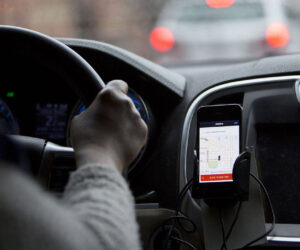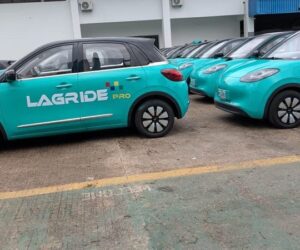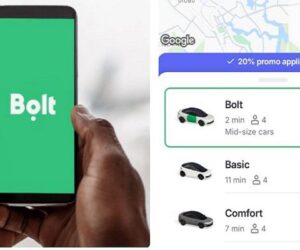Uber introduced its service in Lagos in July 2014, effectively marking the debut of e-hailing in Nigeria. But before making it into Nigeria, Uber had already taken its service to Johannesburg, Pretoria and Cape Town in South Africa back in August of 2013, effectively making it the first e-hailing market in Africa.
Today, more than a decade later, both markets representing the two largest e-hailing markets in Africa have come a long way. They have both witnessed the entry of other e-hailing companies like Bolt, inDrive, etc. They have also had their fair share of gains and losses, trials and struggles, successes and failures.
While the overall business appears to be the same, there are clear differences between the markets.
This post aims to highlight those differences which, for the most part, depict the level of maturity both e-hailing markets have attained. This writer has experienced both markets, taken rides, spoken with drivers, union leaders, and app company representatives.
1. Identification
Unlike in Nigeria, where only drivers are thoroughly vetted and identified, in South Africa, both the driver and rider undergo thorough identity verification, especially on Uber.
While Bolt has the cheapest options, Uber appeals more to riders who prioritise safety above cost. First-time riders are asked to take an in-app photo of a government-approved identification.
The app then vets and authenticates the document before accepting it as a valid means of identification.
This is the single major reason why Uber is quickly catching up with Bolt, which controls the largest share of the market (21 per cent). Uber currently controls 16 per cent.

The president of South Africa’s NEFSA, Ubuntu Lekgokwane, said finally getting the app companies to profile riders didn’t come easily. He said it was a product of years of agitation following the killings and disappearance of more than 160 drivers during the course of their duties.
“We had to demonstrate, we had to take to the streets. It’s not like Uber just woke up in the morning and did it. If they had brought that idea from the start, we wouldn’t be losing lots of lives. In South Africa, we have lost over 160-something people precisely because of the lack of safety features in those apps themselves. However, we welcome the fact that they have listened,” he said.
2. New cars vs Tokunbo cars (on hire-purchase)
The vehicles used for e-hailing in South Africa are generally newer and, by extension, cleaner than those used in Nigeria.
This is because while most vehicles used in South Africa are brand new and financed by the banks. On the contrary, most cars used in Nigeria are second-hand (tokunbo) vehicles, generally obtained on rent or hire-purchase arrangements.
This is generally spurred by the policies in both countries. While the first Lagos e-hailing regulation stipulates that vehicles be less than three years old, it was simply economically impracticable to implement.
In South Africa, the policy stipulates that cars used for e-hailing must not be older than five years (for Uber) and four years (for Bolt). And, thanks to vibrant vehicle financing schemes powered by banks like FNB, getting a new vehicle is commonplace in South Africa.
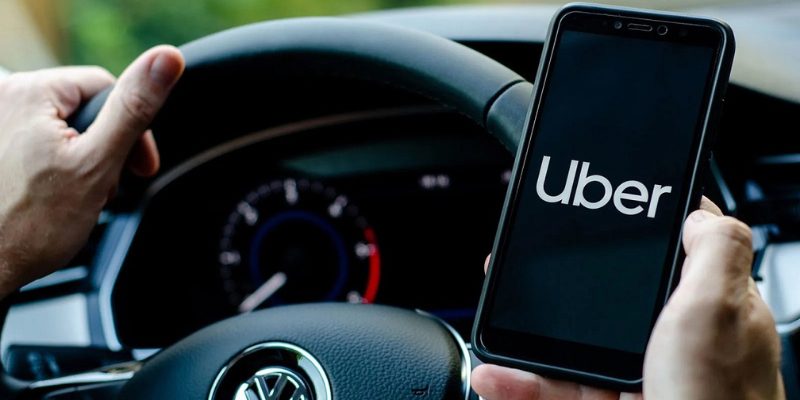

But while riders enjoy rides in newer cars, it comes at a huge and unfair expense for South African drivers. who practically spend four years paying for them, only to be told the next year that the car is older than stipulated, and that they need a new car.
“I bought a car two years ago. This car is a 2021 model. I’m still left with another three years to pay, and this is 2025, and Bolt says I must phase out that car. How am I going to pay that money? The reason I took the car from the bank was that I knew I had a job. Now I must get a new car to keep my job,” the NEFSA president said.
3. Driver’s licence vs operational license
In Nigeria, there are really no barriers to entry for drivers. All they require is a vehicle and a driver’s license, and they are good to go. In South Africa, however, drivers are also required to obtain an additional piece of documentation called the operating license.
This operating license, issued by the government to control the influx of drivers and keep the business profitable, makes it illegal for an e-hailing driver to work without one. It is also illegal for an e-hailing app to accept drivers with no operating license.
Sadly, operating licenses have been abused on several fronts. First is the government using its issuance to control the driver population and reduce their numerical power. Then, despite this, the app companies are accepting drivers who do not have licenses on their platforms.
Yet, regulators impound the vehicles of these drivers while the enabling apps go free.


Finally, middlemen who are friends of the regulators have seized the licensing process, turned themselves into consultants and are enriching themselves by inflating the cost of the license, sometimes five times over.
“The question is, how is it that some individuals are having so many permits and they are selling them to people who are struggling to get one? We suspect that some people have an unfair advantage in getting these permits. One consultant was publicly boasting about having 14 permits, if not more, and selling them for 30,000 rand,” the secretary of NEFSA, Omar Parker, told Technext.
4. Govt-approved drivers’ union
There has been a longstanding debate about whether e-hailing drivers are workers or independent contractors, and whether they deserve to have state-approved unions.
While a deep disagreement still exists about this in Nigeria, the drivers have, however, succeeded in obtaining a certificate of trade from the government, effectively making them a union, the only government-approved one in Africa.
This union, despite its challenges, especially at the national level, has embarked on campaigns on behalf of drivers, notably in Port Harcourt, Benin City and Lagos. In Lagos, alongside the Labour Congress, they are pressuring the state government for legislation that would oversee the operations of app companies.


Drivers in South Africa, on the other hand, are yet to get a government-approved union.
However, there are many drivers’ associations scattered across various provinces in the country, and these associations are now coming together to form a national federation called the National E-hailing Federation of South Africa (NEFSA).
In a chat with Technext, the president of NEFSA, Comrade Legkowane, said they aren’t too worried about government approval at the moment, as they are trying to achieve a hybrid model rather than the traditional model of unions.
“We are not necessarily a traditional union because of some of these contradictions. We are positioning ourselves, and we are saying we don’t want to categorise ourselves as either employer or employee organisation at the moment. We are both. Because of the challenges of this gig economy, we believe that we should have a hybrid model,” he said.
5. e-Hailing vs metered taxis
While e-hailing is introducing a major change to taxi commuting in South Africa, the old order is not giving up without a fight. Known as metered taxis, the operators of the old order have drawn a battle line across the country and dared e-hailing operators to cross those lines.
Generally, public places like malls, airports, train stations and others are the exclusive preserves of metered taxis. This leaves e-hailing vehicles roaming the streets, forbidden from the areas with the highest concentration of commuters.
This, of course, is not acceptable for some drivers who still insist on hanging around these public places in search of riders.
See also: Outrage as e-hailing driver is burnt alive by minibus operators in South Africa’s Maponya Mall
The above has led to several clashes between the two groups, with the metered taxi operators generally being the aggressors. The most recent case saw an e-hailing driver gruesomely burned alive in his vehicle outside the Maponya Mall in Soweto.
Another driver was seriously injured, and his vehicle was set ablaze.


In Nigeria, while a struggle for turf generally does not exist, e-hailing drivers are, however, not allowed in airports. This is due to the presence of registered airport taxis. This, however, hasn’t stopped drivers from picking up passengers at airports. And, while there have been reports of confrontations, there has never been any case of serious injuries or casualties.
e-Hailing drivers are also not restricted from malls, cinemas and other public places.
In sum
The South African e-hailing space is more advanced than its Nigerian counterpart. They have newer and cleaner vehicles, driven by a strict car age policy, even though drivers think it is overbearing. The space is also more regulated, with the authorities controlling the number of operators per city through a licensing scheme.
They do not have a government-approved union like their Nigerian counterpart, but that’s fine, as the unionists are thinking towards a hybrid system anyway. They also have strict passenger verification, which has brought some degree of safety for drivers.
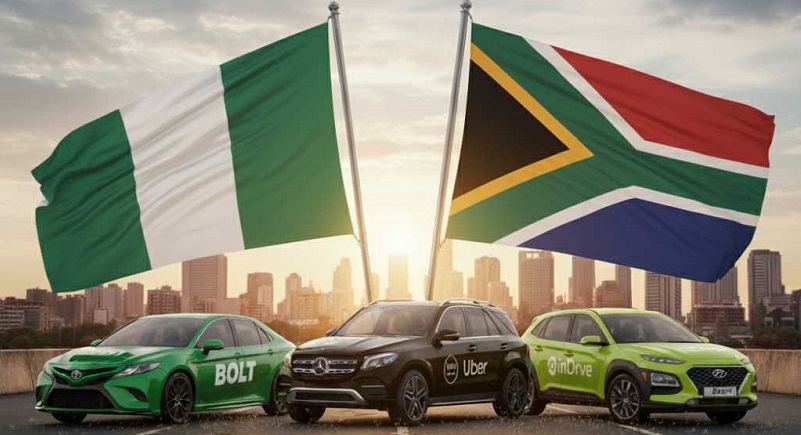

However, the drivers do not feel very safe around their fellow transporters, especially the minibus metered taxi operators. This has led to several clashes and casualties. The government appears to be addressing this, though, with the introduction of new regulations specifically tailored for e-hailers.
However, both countries share similar challenges, especially with the perceived conduct of the app companies.
There have been accusations of utter disregard for the welfare of drivers, inadequate pricing, lack of safety and insurance, and in South Africa, app companies have been accused of onboarding drivers without operating licenses in a bid to widen their revenue source.


